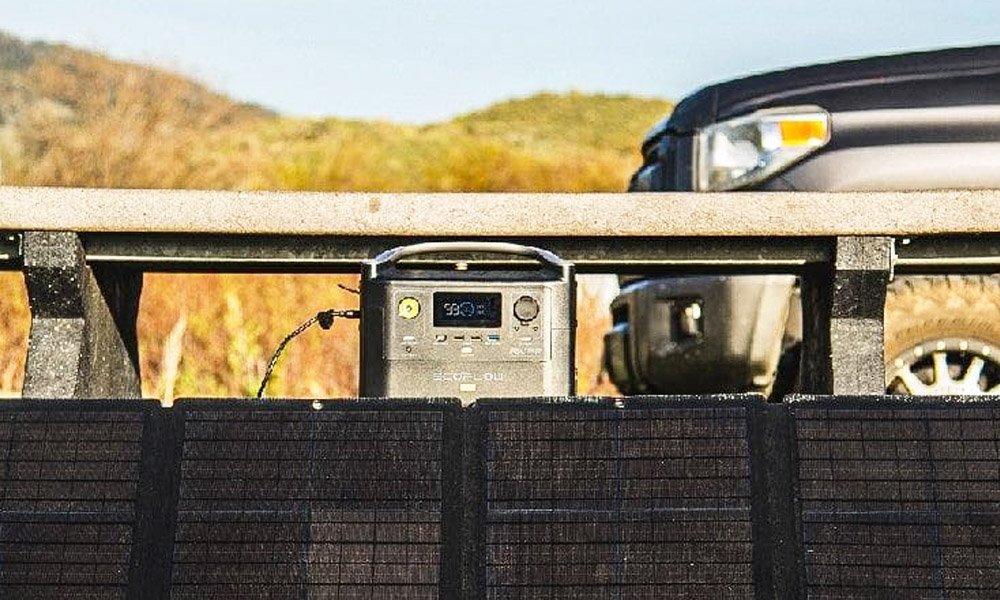As energy costs continue to soar and climate change intensifies, homeowners are increasingly seeking ways to break free from traditional power grids. The vulnerability of centralized energy systems, coupled with rising utility bills, has created an urgent need for sustainable alternatives that offer true independence. Solar generators have emerged as a transformative solution, providing households with the ability to generate, store, and manage their own clean energy.
Unlike conventional backup systems, these advanced power stations offer a pathway to complete energy autonomy while reducing environmental impact. By harnessing the sun’s unlimited potential, homeowners can now achieve reliable power generation, significant cost savings, and enhanced resilience against outages. This comprehensive guide explores how solar generators are revolutionizing home energy independence, offering practical insights for those ready to take control of their energy future.
Understanding Energy Independence: Beyond the Grid
True energy independence means having complete control over your power generation and consumption, free from the constraints and vulnerabilities of traditional utility systems. As our aging power infrastructure faces increasing strain from extreme weather events and growing demand, the risks of grid dependency become more apparent. Fossil fuel reliance not only exposes households to volatile energy prices but also contributes significantly to environmental degradation. Solar power offers a unique solution by enabling decentralized energy production right where it’s needed – at home.
Unlike other renewable sources, solar technology can be efficiently scaled from single-panel setups to comprehensive whole-house systems, providing flexibility in achieving independence. The level of autonomy can range from partial grid-tied systems that reduce utility bills to complete off-grid installations that eliminate external power dependency entirely. This transition to energy independence through solar power represents a fundamental shift from passive consumption to active energy management, offering both environmental stewardship and economic resilience in an increasingly uncertain energy landscape.

Solar Generators Demystified: Technology Behind the Independence
Modern solar generators represent a sophisticated integration of four essential components that work in harmony to deliver reliable power. At the core, photovoltaic panels capture sunlight and convert it into direct current (DC) electricity through semiconductor materials. This energy flows through a charge controller, which optimizes the charging process and protects the battery from damage. Leading manufacturers like EcoFlow have pioneered advanced battery management systems that maximize efficiency and longevity. The battery storage system, often utilizing advanced lithium iron phosphate (LiFePO4) technology, stores this power for use when needed.
Finally, an inverter transforms the stored DC power into alternating current (AC) that powers household appliances. Unlike traditional fuel generators that produce noise, emissions, and require constant refueling, solar generators operate silently and cleanly. The scalability of these systems offers remarkable flexibility – from portable units perfect for camping to whole-home installations capable of powering every appliance. Many homeowners opt for a hybrid approach, maintaining a grid connection while maximizing solar independence. This configuration allows excess power to be sold back to utilities while maintaining backup capacity for outages. The modular nature of solar generators means systems can expand as energy needs grow, making them a future-proof investment in energy independence.

5 Pathways to Energy Independence Through Solar Generators
1. Achieving Complete Off-Grid Resilience
Achieving total energy independence requires strategic system sizing based on peak household demands. A comprehensive solar generator setup typically needs 10-15kW capacity for average homes, with expanded battery storage providing 2-3 days of backup power. Success stories demonstrate this reality – like the Anderson family in rural Colorado, who maintained full power through a week-long utility outage using their 13kW system with 40kWh battery storage, powering everything from their well pump to home office equipment.
2. Reducing Fossil Fuel Dependence
Solar generators eliminate approximately 6-8 metric tons of CO2 emissions annually per household compared to traditional power sources. By replacing gas generators with solar backup systems, homeowners can prevent roughly 150 gallons of fuel consumption yearly. The integration with electric vehicle charging creates a complete clean energy ecosystem, potentially eliminating another 4.6 metric tons of vehicle emissions annually.
3. Emergency Preparedness Assurance
Advanced solar generators feature millisecond switchover capabilities during outages, ensuring uninterrupted power for critical medical equipment and essential appliances. During Hurricane Ian, Florida residents with solar backup systems maintained refrigeration, air conditioning, and medical device operation while surrounding areas experienced extended blackouts, demonstrating the critical role of solar resilience.
4. Long-Term Financial Liberation
Net metering programs allow homeowners to earn credits for excess solar production, effectively eliminating monthly electricity bills. Federal tax credits cover 30% of system costs, while state incentives can add another 10-25% in savings. Compared to fuel generators, solar systems typically achieve complete return on investment within 5-7 years while providing 20+ years of reliable service.
5. Sustainable Lifestyle Integration
Daily solar generation enables carbon-neutral living through smart energy scheduling, like running high-consumption appliances during peak sunlight hours. Community microgrids powered by interconnected solar systems demonstrate the potential for neighborhood-level sustainability, creating resilient power networks that align with environmental values.
Implementing Your Energy Independence: Practical Steps
Needs Assessment & System Sizing
Begin your journey to energy independence by conducting a detailed energy audit. Track your household’s electricity usage over several months using utility bills and smart meters to identify peak consumption periods. Essential loads like HVAC, refrigeration, and medical equipment typically require 30-50% of total household power. Factor in seasonal variations and future needs, such as electric vehicle charging.
A professional energy assessment can map your roof’s solar potential and identify optimal panel placement angles for maximum generation efficiency. Consider your geographic location’s solar insolation rates – southern states may need fewer panels than northern regions for equivalent power production.
Equipment Selection Guide
When choosing solar generator components, evaluate your mobility requirements first. Portable systems offer flexibility but typically max out at 2-3kW, suitable for emergency backup or RV use. Stationary whole-home systems provide 10-40kW capacity for complete independence.
For batteries, LiFePO4 technology offers superior longevity with 6000+ cycles compared to 500 cycles for lead-acid, though at higher initial cost. Select pure sine wave inverters rated at least 20% above your peak load to protect sensitive electronics. Budget-conscious buyers can start with essential circuits and expand modularly. High-efficiency panels maximize limited roof space, while microinverters optimize performance when partial shading is unavoidable.
Installation & Maintenance
While DIY installation can reduce costs, professional certification ensures safety compliance and warranty protection. Optimal panel placement requires precise angle calculations and structural assessment. Regular maintenance includes quarterly panel cleaning, annual connection inspections, and battery health monitoring.
Modern monitoring systems provide real-time performance data through smartphone apps, enabling quick problem detection. Keep ventilation paths clear and inspect for wildlife nesting that could compromise system efficiency.
Addressing Common Challenges
While solar generators offer a path to energy independence, several common challenges require strategic solutions. Weather variability concerns can be addressed through smart battery sizing – experts recommend 30% additional storage capacity beyond calculated needs to account for consecutive low-sun days. Modern lithium batteries with advanced thermal management maintain performance between -4°F to 140°F, while hybrid charging capabilities allow seamless grid integration during extended overcast periods.
For budget-conscious homeowners, power purchase agreements (PPAs) eliminate upfront costs, while state-specific incentive stacking can reduce out-of-pocket expenses by up to 60%. Space-constrained properties benefit from high-efficiency bifacial panels that generate power from both sides, while vertical mounting solutions maximize limited roof areas.
Evolving energy needs are accommodated through modular system design – the ability to add battery capacity or expand solar arrays without replacing core components ensures long-term adaptability. Smart energy management systems further optimize performance by learning usage patterns and automatically adjusting power distribution based on real-time generation and consumption data.
Empowering a Sustainable Future Through Solar Independence
Solar generators have emerged as a transformative technology that makes true energy independence accessible to homeowners worldwide. By combining advanced battery storage, intelligent power management, and clean solar generation, these systems offer a comprehensive solution to the challenges of traditional grid dependency.
The environmental benefits of eliminating fossil fuel reliance align perfectly with the economic advantages of reduced utility bills and increased property value. Through careful planning, appropriate system sizing, and proper implementation, households can achieve varying degrees of energy autonomy that best suit their needs and circumstances. As extreme weather events become more frequent and energy costs continue to rise, the investment in solar independence represents not just a practical solution but a fundamental shift toward a more resilient and sustainable future.
The path to energy independence begins with a simple step – whether through an energy audit or consultation with solar professionals, the time to take control of your energy future is now. By embracing solar generator technology, you’re not just powering your home; you’re participating in a crucial transformation toward a cleaner, more independent energy landscape.


